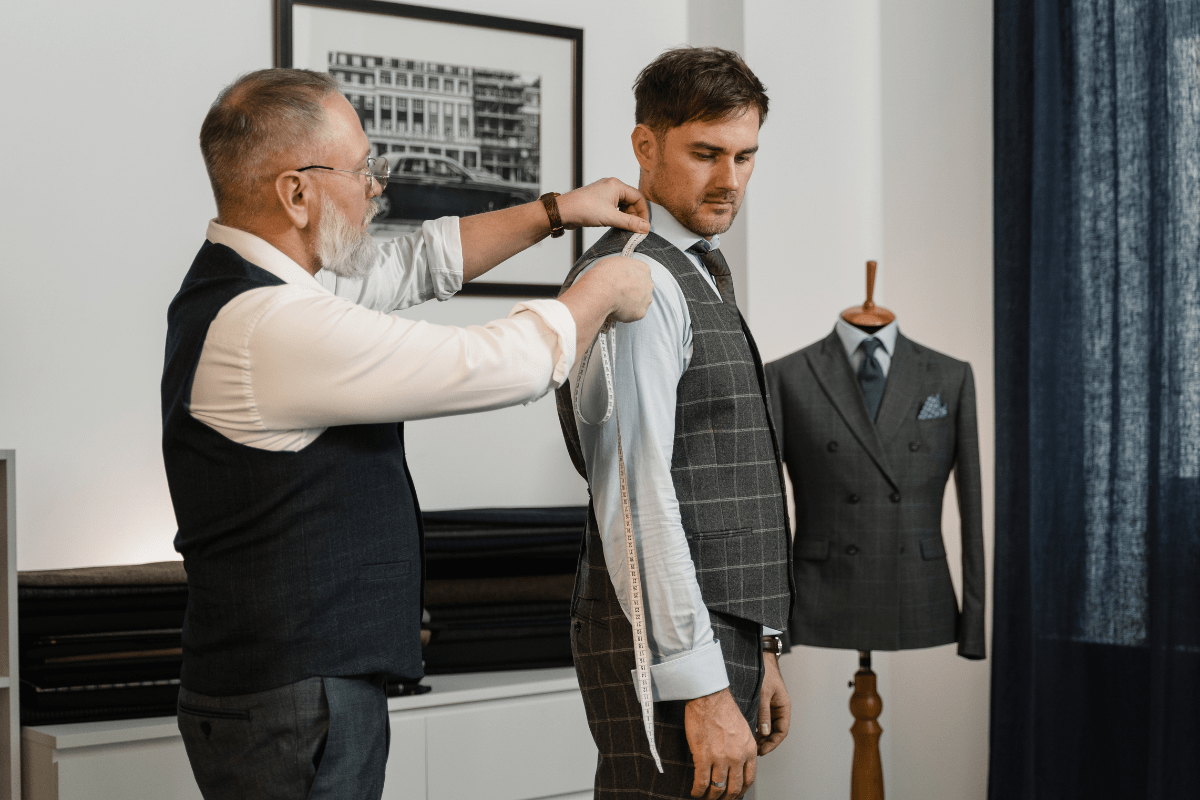The Importance of Tailoring: Tips For a Well-Fitted Wardrobe
How we dress is an expression of ourselves, and it can significantly impact how we feel and behave. A well-fitted wardrobe is a crucial component of this expression, as it can boost confidence and establish a positive first impression. Tailoring, the process of altering clothes to fit one’s body, is essential to achieve a well-fitted wardrobe. It is a technique that has been practiced for centuries and remains relevant today. From the boardroom to the ballroom, tailored clothes are an essential part of dressing appropriately for any occasion.

Tailoring has evolved over the years, and the process has become more accessible than ever before. With advancements in technology and the increasing number of tailoring services available, achieving a well-fitted wardrobe on any budget is possible. However, it is still essential to understand the basics of tailoring to ensure that your clothes fit well and look great.
Let’s explore the importance of tailoring and walk through tips for achieving a well-fitted wardrobe. We will discuss the benefits of tailoring, including improved fit, comfort, and durability. We will also cover the different types of tailoring, such as made-to-measure and bespoke, and provide advice on choosing the right tailor for your needs.
Whether you are a fashion enthusiast or simply looking to improve your wardrobe, this article will provide valuable insights into the world of tailoring. By the end of this article, you will have a deeper understanding of the importance of tailoring and the steps you can take to achieve a well-fitted wardrobe. So, let’s get started!
The Benefits of Tailoring
Tailoring offers numerous benefits for those seeking well-fitting and high-quality clothing. One of the primary benefits of tailoring is that it improves the fit of a garment. Unlike mass-produced clothing, tailored clothing is made to fit the unique measurements of the wearer. This results in a more flattering and comfortable fit that can enhance the wearer’s appearance and confidence.
In addition to improved fit, tailoring can also increase the comfort of clothing. When clothing is tailored to fit the wearer’s body, it can reduce the amount of fabric that bunches or pulls in places, which can cause discomfort. Tailored clothing can also be designed with features such as vents, lining, and adjustable waistbands to further enhance comfort.
Another benefit of tailoring is increased durability. Tailored clothing is generally made with higher quality materials and construction techniques than mass-produced clothing. This means that tailored clothing is often more durable and can withstand wear and tear better than off-the-rack clothing. In addition, tailored clothing can be reinforced in areas that are prone to wear, such as pockets and hems, to further increase longevity.

The benefits of tailoring make it a worthwhile investment for those looking for high-quality, well-fitting clothing. Whether you’re looking to enhance your appearance, improve your comfort, or increase the longevity of your clothing, tailored garments are a smart choice. So, if you’re tired of settling for ill-fitting and low-quality clothing, consider investing in tailoring to experience the many benefits it has to offer.
It’s essential to understand that everyone’s body is unique. Off-the-rack clothing is made to fit a broad range of body types, but it’s unlikely to fit anyone perfectly. This is where tailoring comes in. By making small adjustments to the clothing, a tailor can ensure that it fits your body like a glove.
Common Alterations
One of the most common alterations is shortening or lengthening the sleeves or pant legs. This is especially important for shorter or taller people who struggle to find clothes that fit well. A tailor can also adjust the waistline to ensure that pants sit comfortably on your hips or cinch in at the waist. This can make a significant difference in how your clothes sit on your body and how you feel in them.
Tailoring allows you to wear clothes that may not have been previously flattering. For example, a suit that is too loose or too tight can be altered to fit your body perfectly, highlighting your best features. Similarly, a blazer that is too boxy can be nipped in at the waist to create a more tailored silhouette.

When it comes to tailoring, the fit of your clothing is crucial. Clothes that are too tight or too loose can be unflattering and uncomfortable. A well-fitted garment should skim your body without being too tight or too loose. It should allow for movement while still accentuating your best features.
In addition to achieving a better fit, tailoring can also extend the life of your clothes. By taking care of small repairs and alterations, you can prolong the lifespan of your garments significantly. This saves you money in the long run and reduces the amount of clothing that ends up in landfills.
Achievement of a Well Fitted Wardrobe
So, how do you achieve a well-fitted wardrobe? Firstly, take the time to find a good tailor. Look for someone who has experience working with a range of body types and who understands how clothes should fit. Secondly, invest in high-quality clothing that is worth the extra cost of tailoring. Finally, be willing to spend a little extra time and money on tailoring. The results will be worth it.

Different Types of Tailoring
There are several types of tailoring, each with its own unique features and techniques. Here are some of the most common ones:
- Bespoke tailoring: This is a type of tailoring that involves creating a garment from scratch based on the measurements and specifications of the individual customer. It is a highly personalized process, and the end result is a garment that fits the customer perfectly.
- Made-to-measure tailoring: Similar to bespoke tailoring, made-to-measure tailoring involves creating a garment based on the customer’s measurements. However, it is less personalized than bespoke tailoring, as the garment is made using pre-existing patterns and designs.
- Alterations: This type of tailoring involves making changes to an existing garment to improve its fit or style. Alterations can include shortening or lengthening the sleeves or hemline, taking in or letting out the waist, or changing the buttons or other details.
- Repairs: Tailors can also repair damaged garments, such as fixing tears, replacing zippers or buttons, or reweaving fabric.
Overall, tailoring is a skilled craft that requires precision and attention to detail. Whether you’re looking for a custom-made suit or simply need some alterations to your favorite outfit, a good tailor can help you achieve the perfect fit and style.






